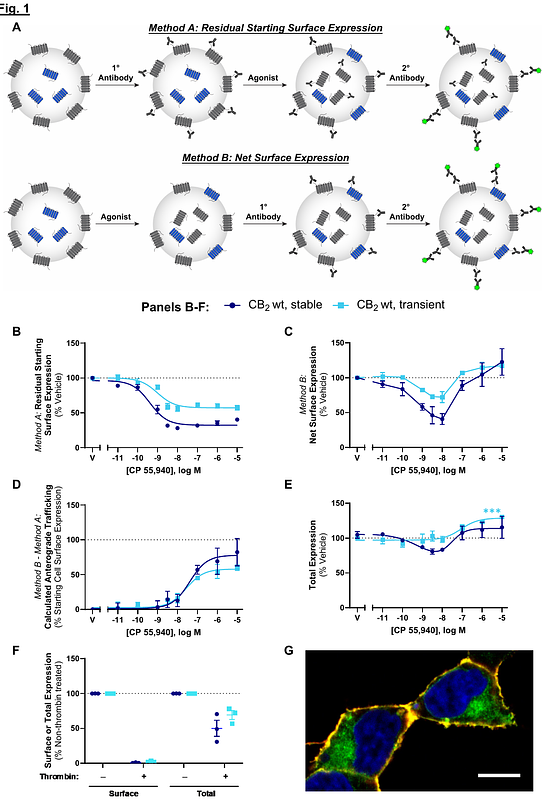Insights into anterograde trafficking and pharmacological chaperoning of Cannabinoid Receptor 2 (CB2)

Insights into anterograde trafficking and pharmacological chaperoning of Cannabinoid Receptor 2 (CB2)
Oyagawa, C. R.; Woodhouse, B.; Wood, K. C.; Glass, M.; Grimsey, N. L.
AbstractCannabinoid Receptor 2 (CB2) is a promising therapeutic target for modulating inflammation. Canonical signalling responses to receptor ligands are critically dependent on cell surface receptor expression. However, it is also now appreciated that intracellular G protein-coupled receptors can contribute to signalling responses and influence functional outcomes. Therefore, understanding how the subcellular distribution of receptors is controlled is also highly pertinent. CB2 is observed to be expressed at the cell surface as well as having a considerable proportion expressed intracellularly. Despite this distribution being well established, little is known about the regulation of CB2 anterograde trafficking and subcellular distribution. We report that sustained stimulation with a range of CB2 agonists concurrently internalises cell surface human CB2 and stimulates a distinct population of CB2 to be delivered to the cell surface, at various expression levels. We present evidence that the ligand-stimulated anterograde trafficking is a result of CB2 agonists, as well as inverse agonists, acting as pharmacological chaperones. We also report that a di-lysine (KK) motif in the CB2 C-terminal tail is required for basal delivery to the cell surface. Corroborating the hypothesis that CB2 ligands can act as pharmacological chaperones, sustained CB2 ligand stimulation induces cell surface expression of the mutated receptor and alters maturation states as measured by western blotting. Our finding that CB2 ligands can unconventionally manipulate CB2 cell surface expression may well have important implications for optimal design of CB2-targeted therapeutics.